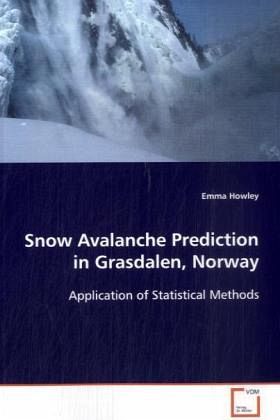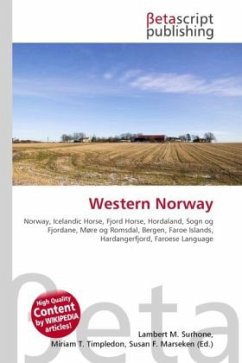
Snow Avalanche Prediction in Grasdalen, Norway
Application of Statistical Methods
Versandkostenfrei!
Versandfertig in 6-10 Tagen
39,99 €
inkl. MwSt.

PAYBACK Punkte
20 °P sammeln!
Snow avalanches are a common hazard in manymountainous environments. As such, it is oftennecessary to be able to predict these events.In this study detailed analysis of weather parametersin western Norway has established common triggeringfactors for avalanches in Grasdalen. Two large setsof weather data have been used. A number of winddrift factors have been derived, asseveral authors consider these to be important.Statistical procedures were applied, includingcumulative probability plots and classificationtrees. The latter highlighted the most importantweather parameters used to classify data...
Snow avalanches are a common hazard in many
mountainous environments. As such, it is often
necessary to be able to predict these events.
In this study detailed analysis of weather parameters
in western Norway has established common triggering
factors for avalanches in Grasdalen. Two large sets
of weather data have been used. A number of wind
drift factors have been derived, as
several authors consider these to be important.
Statistical procedures were applied, including
cumulative probability plots and classification
trees. The latter highlighted the most important
weather parameters used to classify data in terms of
dry avalanche days or non avalanche days. Results of
these indicate important splitting factors to be
various sums of precipitation and the maximum
temperature. The combined wind drift factors were
considered less important.
These results are not in total agreement with
previous authors, however, this study serves as a
critical appraisal of current statistical methods of
avalanche prediction and would be useful for
avalanche forecasters and researchers.
mountainous environments. As such, it is often
necessary to be able to predict these events.
In this study detailed analysis of weather parameters
in western Norway has established common triggering
factors for avalanches in Grasdalen. Two large sets
of weather data have been used. A number of wind
drift factors have been derived, as
several authors consider these to be important.
Statistical procedures were applied, including
cumulative probability plots and classification
trees. The latter highlighted the most important
weather parameters used to classify data in terms of
dry avalanche days or non avalanche days. Results of
these indicate important splitting factors to be
various sums of precipitation and the maximum
temperature. The combined wind drift factors were
considered less important.
These results are not in total agreement with
previous authors, however, this study serves as a
critical appraisal of current statistical methods of
avalanche prediction and would be useful for
avalanche forecasters and researchers.












